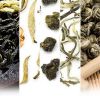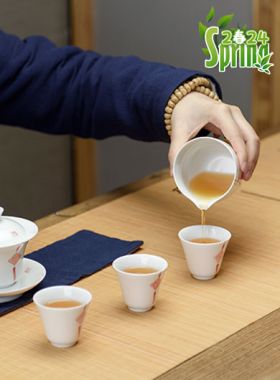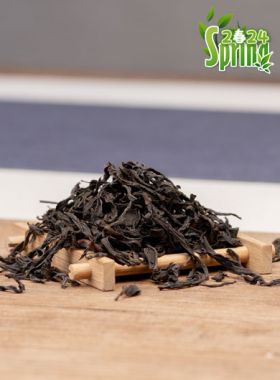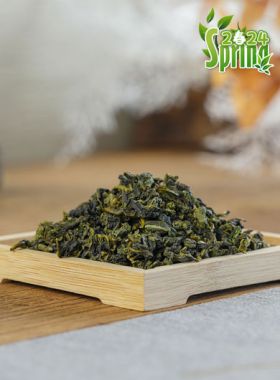-
Fast ShippingFree shipping for orders above $40
to most countries. -
Secure PaymentPay with Paypal, Credit Card …
-
Carefully SelectedFrequently Visit Tea Gardens.
Taste Repetitiously -
15 Days RefundNo Questions Asked
Refund Policy
Charcoal-baked Anxi Tie Guan Yin Oolong Tea
Slightly roasted, fruity and floral
Slightly roasted, fruity and floral
| Origin: |
Anxi County, Quanzhou City, Fujian Province, China |
|---|---|
|
Harvest Date: |
May 28, 2022 |
| Dry Leaf: |
Tightly curled into semi-ball |
| Aroma: |
Charcoal baked aroma mixed with a bit of sea sedge notes |
| Liquor: |
Clear golden yellow |
| Taste: |
Balanced, smooth, lighted charcoal baked flavor with gently flowery flavor |
| Tea Bush: |
C. sinensis cv. Zheng Cong Tieguanyin |
| Tea Garden: |
Longjuan Tea Garden |
| Caffeine: |
Moderate caffeine (less than 20% of a cup of coffee) |
| Storage: |
Store in airtight, opaque packaging; keep refrigerated |
| Shelf Life: |
24 Months |
Angel's Comment:
The perfect combination of charcoal baked flavor and slight flower scent make this tea is ideal for those coffee or fresh-scent TGY lovers who want to try a new taste of oolong tea.
This baked tie guan yin tea goes through a complex processing sequence, requiring much more expertise and skill when compared to regular fresh-scent, or lightly baked, tie guan yin. In order to bake the tea, original fresh-scent leaves must slow roast over a charcoal fire for about 3 hours, which gives the tea clear, golden-yellow liquor with some light red hues. A hint of floral sweetness and baked smokiness can be detected on the first brewing of the leaves, and even after five steeps this tea still brings out a pleasant spectrum of different flavors, without being the least bit overwhelming or bitter.
 |
Cup Method |
 |
Chinese Gongfu Method |
 |
Teacup: 12oz / 355ml |  |
Gaiwan: 3.8oz / 110ml |
 |
212℉ / 100℃ |  |
212℉ / 100℃ |
 |
3 Teaspoons / 5g Tea |  |
7g Tea |
 |
Brewing time: 3 - 5 mins |  |
7 steeps: rinse,10s, 20s, 30s, 40s, 55s, 70s, 100s |
| Rinse time is around 5 seconds |
The Long Juan stream tea garden was founded by local tea farmers about 10 years ago, and this plantation carefully watched by those local farmers is steadily becoming more and more prosperous.

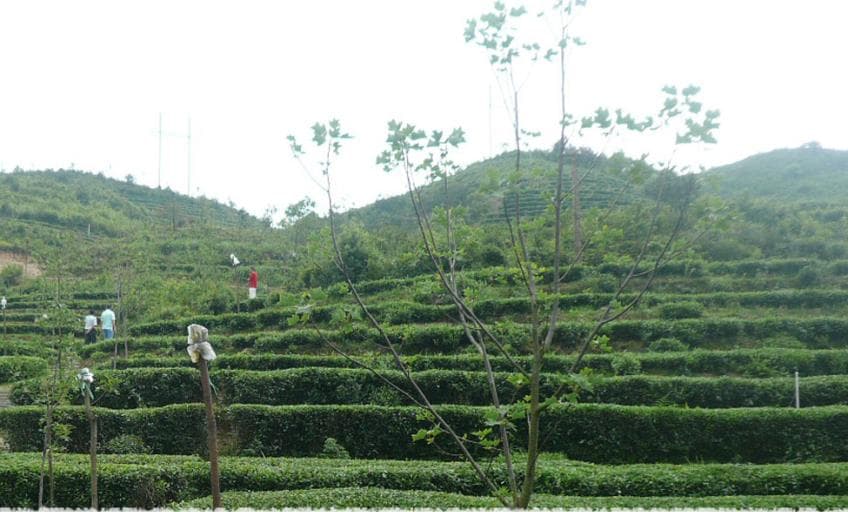
Mr. Lin Xingbiao has been a professional tea farmer for over forty years. Born to a traditional tea family, he has been deeply ingrained in the culture since childhood, and ended up building his own tea factory. As his factory gradually grows, he continually attempts to seek a common development between the tea enterprise and the tea farmers themselves.
Mr. Lin believes that the hardest factor to overcome is the weather: if leaves suffer from bad weather, then the result will be a reduced yield with lowered quality. During cold weather the leaves are covered with straw in order to prevent them from frosting; this is one thing that Mr. Lin has learned throughout his years of experience.
His first priority is to strictly control his products’ quality and ensure its reputation. Mr. Lin, together with his tea factory, will continue to provide high-quality tea and regularly increase the number of factories that do so.
Anxi is in the southeast part of Fujian, with a total area of around 3000 square kilometers. The environment here is definitely suitable for growing tea trees, with an average temperature between 16 and 20℃ and an annual precipitation of 1600-1800mm. According to records in the Anxi County Annals, the tea production in this area began during the Tang Dynasty, then rose through the Ming and Qing Dynasties, and flourished in the last century - overall spanning a history of over a thousand years.
Anxi has been renowned as the capital of tea in Fujian, and in March 1995 was named the Home of Chinese Oolong by the Ministry of Agriculture.
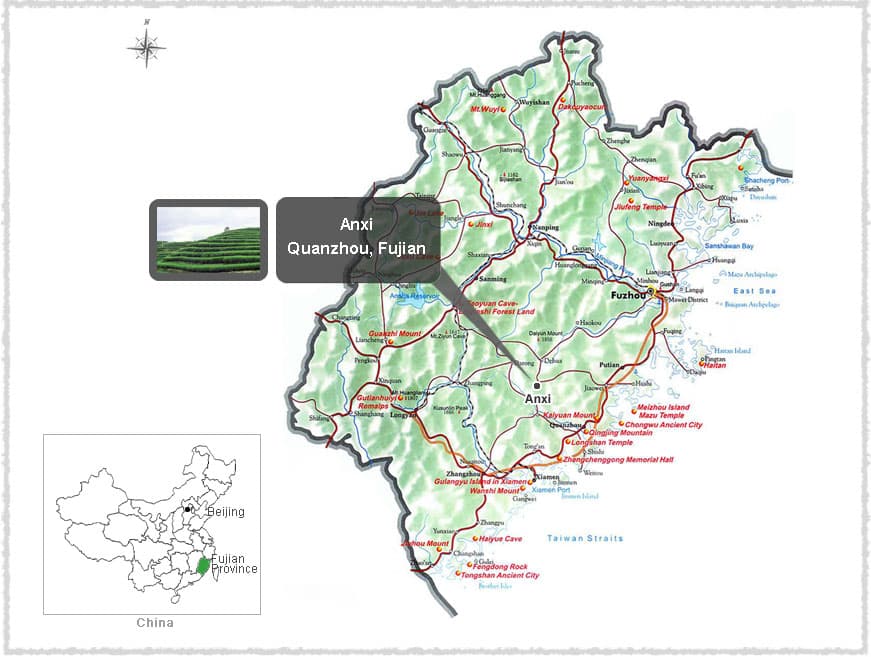
C. sinensis varietal Tieguanyin reproduces through sexual propagation, and takes the form of a shrub with a medium-sized, oval-shaped leaf, deep emerald-green in color. The left dent is thin while the leaf itself is thick yet fragile, and the buds often take on a rich purple-red color. This particular varietal has earned the descriptor “delicious but difficult to grow” since it can flourish only in fertile soil and under appropriate planting and cultivation methods.
Tie Guan Yin is the representative of Chinese oolong tea. Oolong teas were first developed in the early 1700s in Fujian as a cross between nonfermented white and green teas, and fully fermented black teas, with the best of both in a single tea. Oolong quickly became popular throughout eastern China and Taiwan, and in the early 1970s spread to Japan and the rest of the world. Fujian, the home of oolong tea, still produces the finest.
-
5 stars47
-
4 stars23
-
3 stars5
-
2 stars0
-
1 star0



